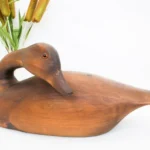
Open Daily 10am - 5pm
12,000sq.ft. of amazing items!
Free and easy parking!

Jade is one of those things that glows with a special aura. It’s a fascinating material, known and treasured for millennia, but not always easy to identify. Here are a few things to know.
First of all, there are two different types of jade: jadeite and nephrite. Each is formed from a different kind of silicate and have their own unique characteristics. Jadeite is the more valuable, especially the rare and lustrous Imperial jade of deep emerald green. It’s found in many places, but rather oddly not in China where jade is most highly esteemed. Most of that comes from Burma.
In contrast, China has large deposits of nephrite, a still lovely stone but without the range of color and luminosity typical of jadeite. It can be hard to tell the difference between jadeite and nephrite, but the former is less granular in appearance. When polished, both will exhibit a glossy glow but jadeite will outshine nephrite when the two are compared side by side. The former is also more translucent when thinly sliced.
A range of colors further distinguishes the two jades. Jadeite is usually green, but not always. In fact, the color spectrum of jadeite runs from white to black with wide array of hues in between. Nephrite colors are generally within a tighter range, mostly in shades of green but occasionally off-white, yellow, and red.
Apart from appearances, both nephrite and jadeite are sturdy and easily worked. Generally, jadeite jewelry and carvings are less elaborate than those made from nephrite due to its higher cost and the resulting efforts of artisans to minimize stone lost in the creation process. While jade can be found in large rocks and even boulders, acquiring it in such form can be a risky business. Buyers can’t be sure of the quality of jade within.
With all that, the allure of jade has persisted for centuries. As raw material for items of utility and beauty, jade has been used since the Stone Age. Talismans made from jade have been said to increase the mental senses, protect against bad luck, and alleviate medical conditions. Jade artworks of stunning beauty can be found in museums around the world. Nonetheless, there are many jade lookalikes and it takes a practiced eye to tell the difference. Look for an almost oily luster and a textured depth below the surface. Those things are good. If you see any fractures or splits, those are definitely not.





We’ll email you about the latest events, sales, and general store updates.

Our antique gallery is located just south of downtown Palm Springs, with free parking and air conditioning throughout.
Open Daily: 10am – 5pm
505 E Industrial Pl.
Palm Springs, CA 92264
© Copyright Antique Galleries of Palm Springs 2024